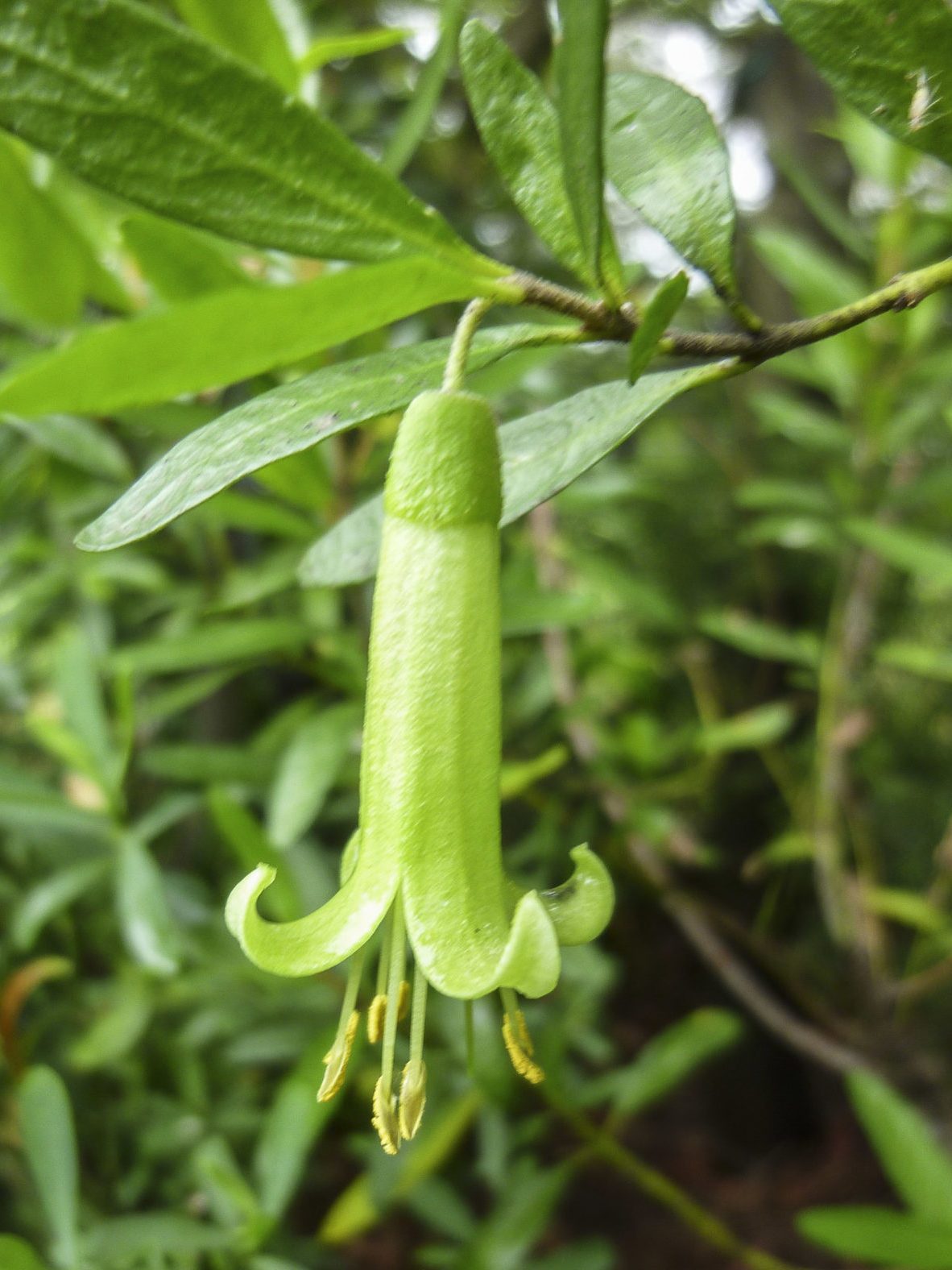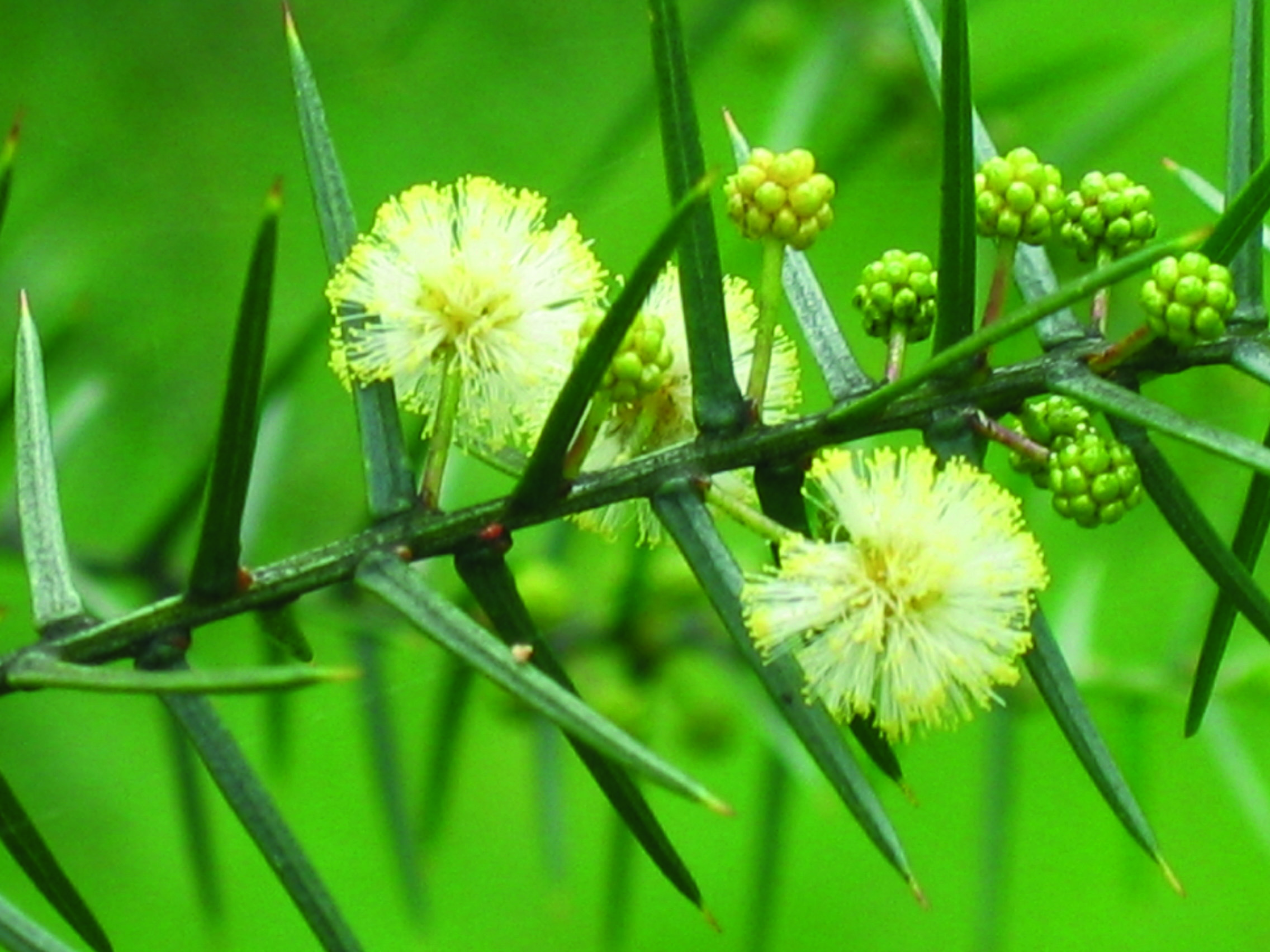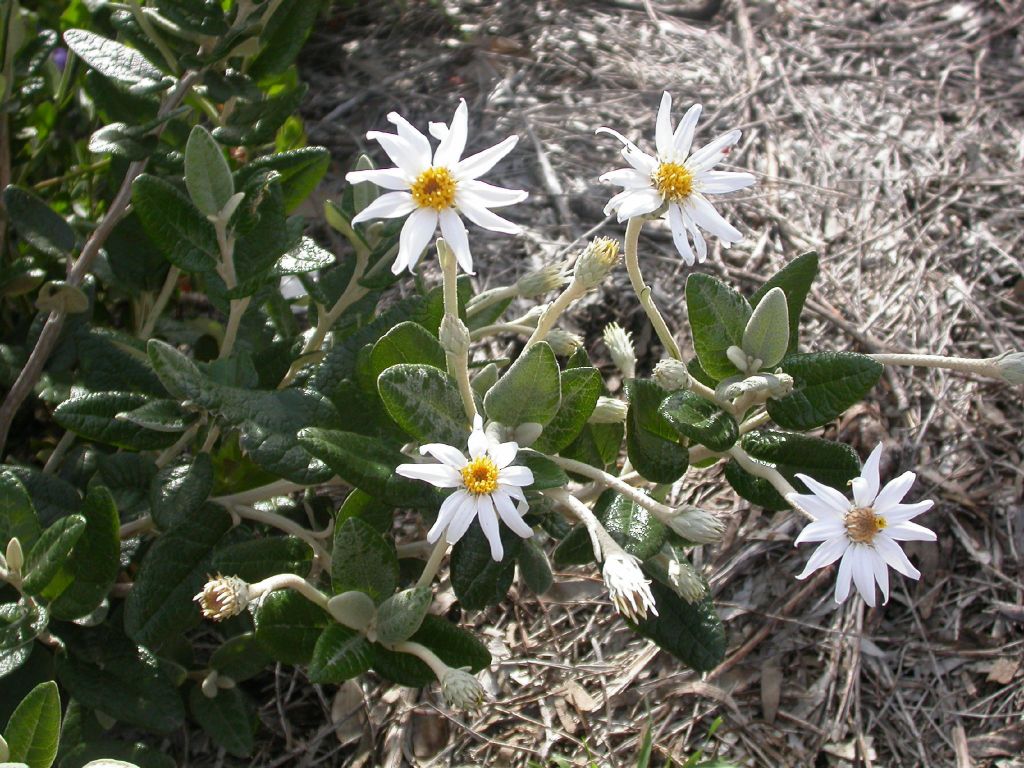Acacia acinacea
Gold-dust Wattle

Description: Straggly low or more erect tough and durable open shrub to 3m high and spreading to 2-4m. Bright green foliage. Flowers late winter to early spring in a profusion of yellow globular flowers. Fast growing, short lived (under 15 years).
Cultivation: Prefers full sun or part shade and well-drained soil. Drought and frost tolerant.
Other:
- Bird and butterfly attracting.
- Useful ornamental and reliable plant.
Bursaria spinosa
Christmas Bush

Description: Variable large spreading shrub up to 3m or more and spreading 1-3m. Leaves are bright green and oval. Stems may have thorns. Creamy perfumed flowers in late spring to summer. Slow growing. Long lived, up to 60 years.
Cultivation: Prefers full sun or part shade and well-drained soil. Moderately drought and frost tolerant.
Other:
- Also known as Sweet Bursaria.
- Bird and butterfly attracting.
- Leaves produce the glycoside aesculin, used in manufacture of some pharmaceuticals.
Dodonaea viscosa var spatulata
Sticky Hop-bush

Description: Hardy spreading or erect shrub up to 4 m high and 3m wide. Sticky bright green leaves. Flowers insignificant. Colourful pink or red fruit like hops in spring. Quite fast growing. Long-lived to around 30 years.
Cultivation: Prefers full sun or part shade and well-drained soil. Drought tolerant and moderately frost tolerant.
Aboriginal Uses: leaves were chewed to relieve toothache. Wood was used to make clubs.
Other:
- Used to make beer by early settlers.
Correa glabra
Rock Correa

Description: A shrub growing to 3 metres tall and 2 metres wide, the Rock Correa is usually found in rocky areas in open woodland. Strongly scented flowers of greenish yellow are tubular and often solitary, and the fruit are composed of small woody, segmented capsules.
Cultivation: Suited to a variety of soil types and are very hardy. Will propagate best from cuttings.
Other:
- The long flowering period attracts the attention of honeyeaters.
Acacia rupicola
Rock Wattle

Description: Growing up to 2 metres and spreading to 1m, this rigid, upright shrub sports slightly sticky and prickly foliage and stems. Masses of cream to yellow flowers are produced in globular heads and seed pods are long and narrow.
Cultivation: Rock Wattle may be propagated from both seed treated with either boiling water or scarification as well as from cuttings.
Aboriginal Uses: Various parts of many acacia species were used for shelter, tools, weapons and textiles as well as medicine and sanitisation.
Olearia pannosa
Silver Daisy Bush

Description: A spreading, tuberous-rooted shrub with a height of 1.5 metres and a spread of around 2 metres. Produces white or occasionally pale mauve daisy-like flowers. After flowering, the seed heads are retained for an extended period.
Cultivation: Seedlings generally germinate readily without treatment in seedling trays or directly into tube stock.
Other:
- Attracts nectar feeders
- Drought, lime and moderate frost tolerant
